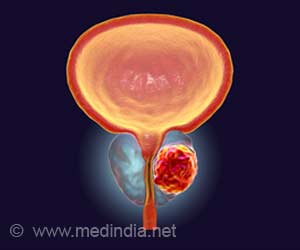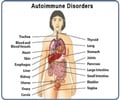Immune-check point inhibitors used in chemotherapy have an increased risk of noninfectious uveitis (inflammation of the eye wall) and myasthenia gravis (MG).

MG is a rare chronic autoimmune disease characterized by muscle weakness, which is caused by a defect in the action of a neurotransmitter (acetylcholine) at the neuromuscular junctions. Checkpoint inhibitors are the drugs that block proteins called checkpoints. Checkpoints are formed by some of the immune system cells and cancer cells. Checkpoints help keep immune responses from being very active and sometimes prevent white blood cells from killing the cancer cells. Hence checkpoint inhibitors are used in the treatment of cancer, as they promote the killing of the cancer cells. Examples of checkpoint inhibitors are ipilimumab, pembrolizumab, nivolumab, atezolizumab, avelumab, cemiplimab and durvalumab
‘The checkpoint inhibitor was associated with a 2.09 fold increased risk of uveitis and a 2.60 fold increase in the risk of myasthenia gravis (MG).
’
Read More..




There are several case reports stating the increased ocular side effects of the checkpoint inhibitors. To study these side effects Dr. Brian L. VanderBeek and colleagues from the University of Pennsylvania, in Philadelphia, analyzed data from the Clinformatics Data Mart Database.Read More..
There were 26 uveitis cases among 8,678 patients exposed to checkpoint inhibitors; that account for 0.3 %. In contrast to these 123 cases was reported among 76,153 patients who were exposed to non-checkpoint inhibitors, which approximately account for 0.2 %. The report is published in the British Journal Of Ophthalmology.
Among 9,210 patients exposed to checkpoint inhibitors 11 cases of myasthenia gravis (0.1 %) were recorded compared to 36 cases among 80,620 patients who were exposed to non-checkpoint inhibitor chemotherapy (0.04 %).
In multivariate analysis the checkpoint inhibitor was associated with a 2.09 fold increased risk of uveitis and a 2.60 fold increase in the risk of MG .
The authors reported,” The exact mechanism of ocular adverse reactions in checkpoint inhibitors is unknown; however, it is likely related to T-cell activation and cross-reactivity of tumor cells and normal tissue. Our results showed that although uveitis and myasthenia gravis have low incidence rates with checkpoint inhibitor use, the hazards for these adverse effects were higher than with standard chemotherapy. Management of these ocular side effects should be to control the symptoms since checkpoint inhibitor therapy can be life-saving."
Advertisement
Advertisement















